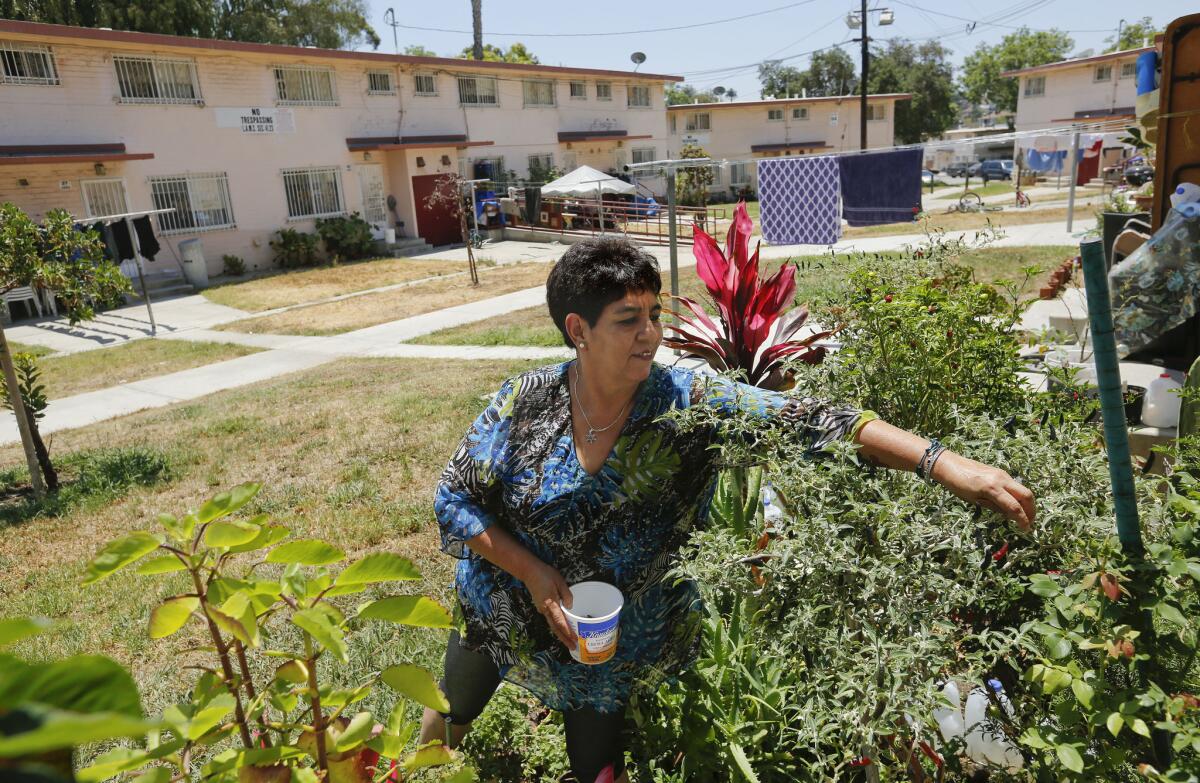Scientists unlock a secret to Latinos’ longevity, with hopes of slowing aging for everyone

A new way to measure how humans age suggests that Latino Americans withstand life’s wear and tear better than non-Latino whites — and that they may have their Native American ancestors to thank for their longer lives.
The findings offer some insight into a long-standing demographic mystery: Despite having higher rates of inflammation and such chronic diseases as obesity and diabetes, Latinos in the United States have a longer average lifespan than do non-Latino whites.
The research also helps answer questions about why some people die young while others live to old age, and what chronic diseases have to do with aging.
To get a handle on some of these thorny issues, UCLA bioinformatician Steve Horvath and his colleagues have been trying to devise a biological clock that measures age more comprehensively than simply counting up birthdays. Their method reflects the activity level of the epigenome, the set of signals that prompt one’s genes to change their function across a lifespan in response to new demands.
This “epigenetic clock” captures a key feature of aging: that as we grow older, there are complex but predictable changes in the rate at which our genes are switched on and off.
Earlier efforts to devise an epigenetic clock suggested that biological age, and the speed of aging, not only differ among populations and from person to person. They also can vary for a single individual, with some body parts aging faster or slower than others. That may help explain why some organs and tissues are more vulnerable to such age-related diseases as cancer.
In the new study, published this month in the journal Genome Biology, Horvath’s team set out to refine and test that clock.
The researchers analyzed blood, saliva and lymphoblastoid samples collected from more than 5,000 people who had participated in a wide range of studies. Those participants included not only black, white and Latino Americans but also Han Chinese, members of the Tsimane Amerindian tribe in South America, a group of hunter-gatherers from a central African rainforest, and another group of African agrarians living in grasslands and open savannas.
To arrive at a single measure of a person’s biological age and then compute his or her speed of aging, the researchers measured epigenetic activity at 353 sites in the genome.
The Tsimane, an indigenous people who forage and cultivate crops in the lowlands of Bolivia, offered an especially good test of the epigenetic clock. Since they’re constantly bombarded with bacterial, viral and parasitic infections, they typically experience high rates of inflammation, which has widely been seen as a marker for aging. But they rarely show risk factors for heart disease or develop Type 2 diabetes as they get older. In addition, obesity, high blood pressure and problematic cholesterol are virtually nonexistent.
The team’s epigenetic clock revealed that the Tsimane aged quite slowly, even compared with Latino Americans. According to the analysis, Tsimane blood looked as if it was two years younger than the blood of Latino Americans and four years younger than the blood of white Americans.
That gap was particularly striking in light of strong evidence that, over the age of 35, a Tsimane’s immune system was close to exhausted and his inflammation levels “make him look like a 90-year-old,” Horvath said.
“This result sheds light on what is frequently called the Hispanic paradox,” he said. “It suggests that what gives Hispanics their advantage is really their Native American ancestry, because they share ancestry with these indigenous Americans.”
Horvath emphasized that Latinos’ slower aging rate cannot be explained by lifestyle factors such as diet, socioeconomic status, education or obesity, because researchers adjusted for the influence of such factors.
The study may also shed light on a different demographic oddity: that once African Americans have reached the age of 85, they tend to live longer than whites of the same age. Using the new gauge of biological aging, the researchers found that older African Americans indeed age more slowly than do whites of the same chronological age.
The measure also found that women age more slowly than men, and that aging accelerates in people with less education and slows with higher educational attainment. These results bolster long-standing observations that women live longer than men (despite suffering more illnesses) and that more education is linked to longevity.
The study results offer some validation of the epigenetic clock because they track nicely with a host of baffling demographic patterns.
Several other studies have begun to validate the clock’s accuracy and reliability, testing it in populations known to age differently from the norm, including people with Down syndrome, HIV infection and Parkinson’s disease. In three studies, the clock has been found to accurately predict mortality from any cause in large populations, even after researchers adjusted for chronological age and a range of factors that can erode health and hasten death.
“This effort is very novel and exciting,” said Max Guo, chief of the division of aging biology at the National Institute on Aging, which has funded Horvath’s research.
Guo said that ultimately, biological clocks that use large panels of markers — not just epigenetics but other measures of well-being — would probably be needed to capture the complexity of aging. “But this is promising,” he said.
Follow me on Twitter @LATMelissaHealy and “like” Los Angeles Times Science & Health on Facebook.
ALSO
Did physicists discover a previously unknown fifth force of nature?
Scientists design a drug that relieves pain like an opioid without some dangerous side effects
West African Ebola victims were more likely to survive if also infected with malaria, study finds
UPDATES:
Aug. 19, 7:40 p.m.: This story has been updated with additional details throughout.
This article was originally published on Aug. 18 at 2:35 p.m.







